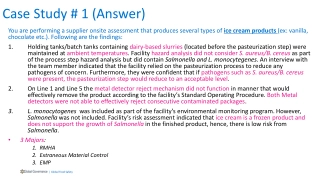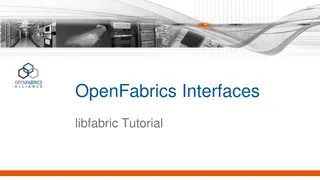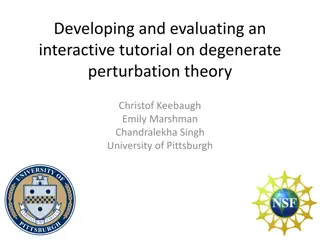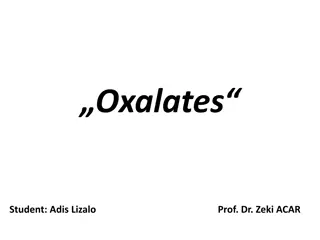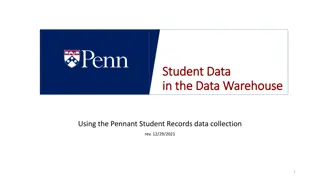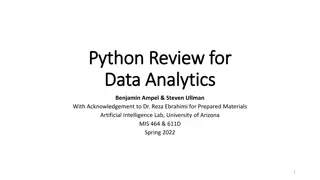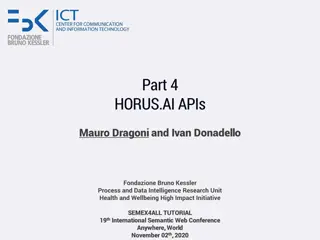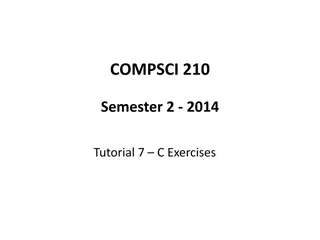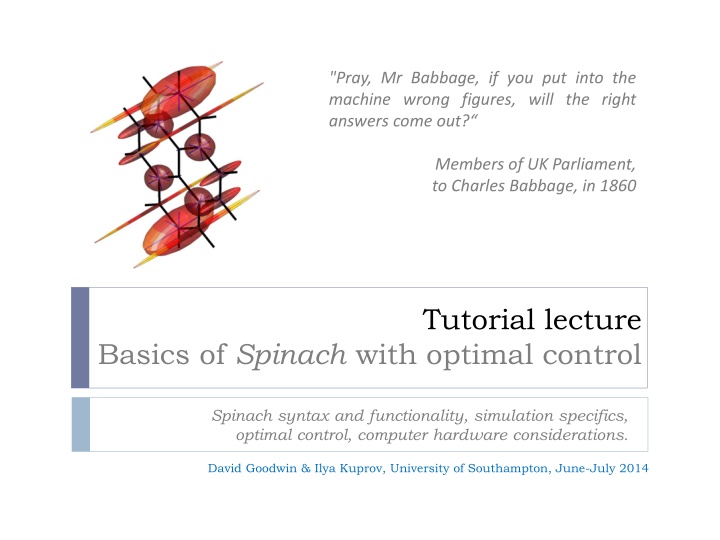
Optimal Control and Simulation in Spinach: A Detailed Overview
Dive into the world of optimal control and simulation with Spinach, a powerful tool for magnetic resonance studies. Learn about its syntax, functionality, and how to use it effectively for computer hardware considerations. Discover the intricate process of magnetic resonance simulation flowcharts and Spinach architecture to understand the underlying mechanisms of this innovative tool.
Download Presentation

Please find below an Image/Link to download the presentation.
The content on the website is provided AS IS for your information and personal use only. It may not be sold, licensed, or shared on other websites without obtaining consent from the author. If you encounter any issues during the download, it is possible that the publisher has removed the file from their server.
You are allowed to download the files provided on this website for personal or commercial use, subject to the condition that they are used lawfully. All files are the property of their respective owners.
The content on the website is provided AS IS for your information and personal use only. It may not be sold, licensed, or shared on other websites without obtaining consent from the author.
E N D
Presentation Transcript
"Pray, Mr Babbage, if you put into the machine wrong figures, will the right answers come out? Members of UK Parliament, to Charles Babbage, in 1860 Tutorial lecture Basics of Spinach with optimal control Spinach syntax and functionality, simulation specifics, optimal control, computer hardware considerations. David Goodwin & Ilya Kuprov, University of Southampton, June-July 2014
Magnetic resonance simulation flowchart Gather spin system, instrument and experiment parameters If you are using Spinach, this is the only thing you would need to do manually. Generate thermal equilibrium state Generate spin Hamiltonian Thermalize rlxn superoperator Generate relaxation superoperator Generate exponential propagator Project out the observables Obtain system trajectory Spinach is not a black box it is an open-source Matlab library of infrastructure functions.
Spinach architecture N.B.: most functions are parallelized and would take advantage of a multi-core computer.
General system specification (magnet, isotopes, labels, tolerances, algorithm options, output files, etc.) sys.* Interactions, chemical kinetics, relaxation theory options, spin temperature, order matrix, etc. inter.* Simulation formalism, approximation options, permutation symmetry, conservation law specification, etc. bas.* % Magnet field sys.magnet=0.33898; % Isotope list sys.isotopes={'E','14N','19F','1H','1H','1H','1H'}; % Basis set bas.formalism='sphten-liouv'; bas.approximation='ESR-2'; bas.sym_group={'S2','S2'}; bas.sym_spins={[4 5],[6 7]}; % Zeeman interactions inter.zeeman.eigs=cell(7,1); inter.zeeman.euler=cell(7,1); inter.zeeman.eigs{1}=[2.0032 2.0012 2.0097]; % Relaxation superoperator inter.relaxation='redfield'; inter.rlx_keep='secular'; inter.tau_c=80e-12;
Processing of spin system structure and interactions, input checking. Creates the spin_system data structure. create() Processing of basis set options, approximations, symmetry and conservation laws. Updates spin_system data structure. basis() Case-specific simulation assumptions ( labframe , nmr , endor , etc.) that have an effect on the Hamiltonian. assume() % Spin-spin couplings inter.coupling.eigs=cell(7,7); inter.coupling.euler=cell(7,7); inter.coupling.eigs{1,2}=(40.40+[24 -12 -12])*1e6; inter.coupling.eigs{1,3}=(22.51+[34.9 -19.8 -15])*1e6; inter.coupling.eigs{1,4}=[9.69 9.69 9.69]*1e6; inter.coupling.eigs{1,5}=[9.69 9.69 9.69]*1e6; inter.coupling.eigs{1,6}=[3.16 3.16 3.16]*1e6; inter.coupling.eigs{1,7}=[3.16 3.16 3.16]*1e6; % Spinach housekeeping spin_system=create(sys,inter); spin_system=basis(spin_system,bas); spin_system=assume(spin_system,'labframe');
Returns the isotropic Hamiltonian and the irreducible components of the anisotropic part. hamiltonian() Returns the relaxation superoperator using the theory specified by the user. relaxation() Returns the thermal equilibrium density matrix or state vector at the specified temperature. equilibrium() Returns user-specified operators or superoperators (including sided product superoperators) operator() Returns user specified density matrices (Hilbert space) or state vectors (Liouville space) state() Performs average Hamiltonian theory treatment (Waugh, Krylov-Bogolyubov, matrix log) average() Runs all types of spin system evolution and detection, uses reduced state spaces under the bonnet. evolution() Et cetera the amount of functionality is HUGE.
Spinach functionality N.B.: A least Matlab R2014a is required, primary reason being parallelization.
Spin system specification in Spinach % Spin system sys.magnet=3.4; sys.isotopes={'1H','1H','E'}; % Zeeman interactions inter.zeeman.matrix={[5 0 0; 0 5 0; 0 0 5] [5 0 0; 0 5 0; 0 0 5] [2.0023 0 0; 0 2.0025 0; 0 0 2.0027]}; % Coordinates inter.coordinates={[0.0 0.0 0.0] [0.0 2.0 0.0] [0.0 0.0 1.5]}; % Treat all dipolar interactions sys.tols.prox_cutoff=Inf; % Basis set bas.formalism='sphten-liouv'; bas.approximation='none'; % Relaxation theory inter.relaxation='redfield'; inter.equilibrium='levitt'; inter.rlx_keep='kite'; inter.temperature=298; inter.tau_c=10e-12; Spinach has a very detailed input checker if something is amiss, it would tell you.
Protein data import % Protein data [sys,inter]=protein('1D3Z.pdb','1D3Z.bmrb'); Spinach reads the first structure in the PDB file and the whole of BMRB file. Then: Oxygens, sulphurs and terminal capping groups are ignored. Amino acid sequence is checked for a match between BMRB and PDB. OH and terminal NH3 protons are ignored (assumed deuterated). Chemical shifts for CH2, CH3 are replicated if given once in BMRB. Any mismatches or gaps in atom data are reported with an error message. Unassigned atoms are removed. 1. 2. 3. 4. 5. 6. The above policies are a reasonable guess change the text of protein.m if you would like to import the data differently, or modify sys.* and inter.* fields manually after the import. Apart from the full import, three pre-selection options are available: backbone ('H', 'N', 'C', 'CA', 'HA', 'CB', 'HB', 'HB1', 'HB2', 'HB3'), backbone-minimal ('H', 'N', 'C', 'CA', 'HA') and backbone-hsqc ('H', 'N', 'C', 'CA', 'HA', 'NE2', 'HE21', 'HE22', 'CD', 'CG', 'ND2', 'HD21', 'HD22', 'CB'). N.B.: User feedback is shaping the enhancements if you ask for something, it would appear.
Basis set selection % Chemical kinetics inter.chem.parts={[1 2],[3 4]}; inter.chem.rates=[-5e2 2e3; 5e2 -2e3]; % Basis set bas.formalism='sphten-liouv'; bas.approximation='IK-1'; bas.connectivity='scalar_couplings'; bas.level=4; bas.space_level=3; Basis set Description All spin correlations up to, and including, order n, irrespective of proximity on J-coupling or dipolar coupling graphs. Generated with a combinatorial procedure. IK-0(n) All spin correlations up to order n between directly J-coupled spins (with couplings above a user-specified threshold) and up to order k between spatially proximate spins (with distances below the user-specified threshold). Generated by coupling graph analysis. IK-1(n,k) For each spin, all of its correlations with directly J-coupled spins, and correlations up to order n with spatially proximate spins (below the user- specified distance threshold). Generated by coupling graph analysis. IK-2(n) N.B. Many further optimizations available see the basis preparation section of the manual.
Optimal control magnetisation rotation function magnetisation_rotation() % Magnetic field, spins, and chemical shift sys.magnet=9.4; sys.isotopes={'1H'}; inter.zeeman.scalar={0.0}; % Basis set and Spinach housekeeping bas.formalism='sphten-liouv'; bas.approximation='none'; spin_system=create(sys,inter); spin_system=basis(spin_system,bas); % Hamiltonian L=hamiltonian(assume(spin_system,'nmr')); % Control operators LpH=operator(spin_system,'L+','1H'); LxH=(LpH+LpH')/2; LyH=(LpH-LpH')/2i; controls={LxH,LyH}; % initial state and target state rho=state(spin_system,{'Lz'},{1}); rho=rho/norm(rho); L_plus=state(spin_system,{'L+'},{1}); L_minus=state(spin_system,{'L-'},{3}); sigma=(L_plus+L_minus)/2; sigma=sigma/norm(sigma);
Optimal control magnetisation rotation % Pulse duration and number of timesteps pulse_duration=1e-2; nsteps=32; time_step=pulse_duration/nsteps; power_level=2*pi*10e3; % define a power level of pulse (max) 10kHz % set the penalty functional function [cost,cost_grad]=cost_function(waveform) % calculate the cost and its gradient [diag_data,cost,cost_grad]=... grape(spin_system,L,controls,waveform,time_step,nsteps,rho,sigma,power_level); % penalize excursions outside the power envelope [pen,pen_grad]=... penalty(waveform,'mean_square_spillout',-ones(size(waveform)),ones(size(waveform))); cost=cost+pen; cost_grad=cost_grad+pen_grad; figure(1) % plot the waveform plot(linspace(0,time_step*nsteps,nsteps),waveform); axis tight; drawnow; end % make a random guess of the waveform as an initial point guess=randn(numel(controls),nsteps); % run the bfgs optimisation @ the cost functional options=struct('method','bfgs','max_iterations',100); fminnewton(spin_system,@cost_function,guess,options); end
Optimal control state transfer function state_transfer_grape(spin_system) % Magnetic field, spins, and chemical shift sys.magnet=9.4; sys.isotopes={'1H','13C','19F'}; inter.zeeman.scalar={0.0,0.0,0.0}; % scalar coupling, Hz (literature) inter.coupling.scalar=cell(3); inter.coupling.scalar{1,2}=140; inter.coupling.scalar{2,3}=-160; % Basis set and Spinach housekeeping bas.formalism='sphten-liouv'; bas.approximation='none'; spin_system=create(sys,inter); spin_system=basis(spin_system,bas); % Hamiltonian L=hamiltonian(assume(spin_system,'nmr'))+1i*relaxation(spin_system); % Control operators LpH=operator(spin_system,'L+','1H'); LxH=(LpH+LpH')/2; LyH=(LpH-LpH')/2i; LpC=operator(spin_system,'L+','13C'); LxC=(LpC+LpC')/2; LyC=(LpC-LpC')/2i; LpF=operator(spin_system,'L+','19F'); LxF=(LpF+LpF')/2; LyF=(LpF-LpF')/2i; controls={LxH,LyH,LxC,LyC,LxF,LyF}; % initial state and target state rho=state(spin_system,{'Lz'},{1}); rho=rho/norm(rho); sigma=state(spin_system,{'Lz'},{3}); sigma=sigma/norm(sigma); % Hamiltonian L=hamiltonian(assume(spin_system,'nmr'))+1i*relaxation(spin_system);
Optimal control state transfer % Pulse duration and number of timesteps pulse_duration=2e-2; nsteps=32; time_step=pulse_duration/nsteps; % define a power level of pulse (max) power_level=2*pi*10e3; % 10kHz % set the penalty functional function [cost,cost_grad]=cost_function(waveform) % calculate the cost and its gradient [diag_data,cost,cost_grad]=... grape(spin_system,L,controls,waveform,time_step,nsteps,rho,sigma,powerlevel); figure(1) % plot data subplot(1,3,1); trajan(spin_system,diag_data.trajectory,'correlation_order'); subplot(1,3,2); trajan(spin_system,diag_data.trajectory,'local_each_spin'); subplot(1,3,3); plot(linspace(0,time_step*nsteps,nsteps),waveform); % make a random guess of the waveform as an initial point guess=randn(numel(controls),nsteps); end % run the bfgs optimisation @ the cost functional options=struct('method','bfgs','max_iterations',100); fminnewton(spin_system,@cost_function,guess,options); end
A complete protein example case % Protein data [sys,inter]=protein('1D3Z.pdb','1D3Z.bmrb'); % Magnet field sys.magnet=21.1356; % Tolerances sys.tols.prox_cutoff=4.0; sys.tols.inter_cutoff=2.0; % Relaxation theory inter.relaxation='redfield'; inter.rlx_keep='kite'; inter.tau_c=5e-9; % Basis set bas.formalism='sphten-liouv'; bas.approximation='IK-1'; bas.connectivity='scalar_couplings'; bas.level=4; bas.space_level=3; % Create the spin system structure spin_system=create(sys,inter); % Build the basis spin_system=basis(spin_system,bas); % Sequence parameters parameters.tmix=0.065; parameters.offset=4250; parameters.sweep=10750; parameters.npoints=[512 512]; parameters.zerofill=[2048 2048]; parameters.spins={'1H'}; parameters.axis_units='ppm'; % Simulation fid=liquid(spin_system,@noesy,parameters,'nmr'); L.J. Edwards, D.V. Savostyanov, Z.T. Welderufael, D. Lee, I. Kuprov, "Quantum mechanical NMR simulation algorithm for protein-size spin systems", Journal of Magnetic Resonance, 2014, 243, 107-113. N.B. In most cases you would be parsing some data of your own in the second line.
What you need to provide Zeeman interactions electron-nuclear interactions microwave and radiofrequency terms = + + + + H H H H H H Z NN EN EE MW inter-nuclear and quadrupolar interactions inter-electron interactions and zero-field splitting Zeeman interactions: chemical shielding tensors for nuclei and g-tensors for electrons. Where to get: from the literature or from quantum chemistry packages (Gaussian, CASTEP, ORCA, etc.). ( ) E ( ) k ( ) N ( ) k k k = + A A H B E B N Z 0 0 k k GIAO DFT B3LYP/cc-pVTZ or similar is generally accurate for small CHNO molecules. N.B.: DFT calculations for heavy metals and large aromatic systems require considerable skill.
What you need to provide Zeeman interactions electron-nuclear interactions microwave and radiofrequency terms = + + + + H H H H H H Z NN EN EE MW inter-nuclear and quadrupolar interactions inter-electron interactions and zero-field splitting Inter-nuclear interactions: J-couplings, nuclear quadrupolar interactions, inter- nuclear dipolar interactions. Where to get: literature or DFT for J-coupling and NQI. Dipolar couplings are most conveniently extracted from Cartesian coordinates of the spins. ) ( 4 j k jk r )( ( NN ( ) Q , j k k = + A 2 H J N N N N NN j k k k j k k ) ( ) N ( ) N 5 j k 2 jk 3( )( ) ( ) 0 N r r N r N N j jk jk k j k N.B.: despite the common scalar coupling moniker, J-coupling is actually a tensor too.
What you need to provide Zeeman interactions electron-nuclear interactions microwave and radiofrequency terms = + + + + H H H H H H Z NN EN EE MW inter-nuclear and quadrupolar interactions inter-electron interactions and zero-field splitting Electron-nuclear interactions: isotropic (aka Fermi contact) and anisotropic hyperfine couplings. Where to get: literature or DFT (requires specialized basis sets). For remote electron-nuclear pairs (10 Angstroms or more), Cartesian coordinates. ( EN ) , j k = A H E N EN j k , j k Note the strong directionality of some HFC tensors. N.B.: anisotropic hyperfine and electron-nuclear dipolar interactions are the same thing.
What you need to provide Zeeman interactions electron-nuclear interactions microwave and radiofrequency terms = + + + + H H H H H H Z NN EN EE MW inter-nuclear and quadrupolar interactions inter-electron interactions and zero-field splitting Inter-electron interactions: exchange interaction, zero field splitting, inter-electron dipolar interactions. Where to get: literature or DFT for exchange coupling and ZFS. Dipolar couplings are most conveniently extracted from Cartesian coordinates of the spins. ) ( 4 j k jk r )( ( EE ( ) ZFS , j k k = + A 2 H J E E E E EE j k k k j k k ) ( ) E ( ) E 5 j k 2 jk 3( )( ) ( ) 0 E r r E r E E j jk jk k j k N.B.: the practical accuracy of DFT for exchange coupling and particularly ZFS is very low.
What you need to provide Zeeman interactions electron-nuclear interactions microwave and radiofrequency terms = + + + + H H H H H H Z NN EN EE MW inter-nuclear and quadrupolar interactions inter-electron interactions and zero-field splitting Microwave and radiofrequency terms: amplitude coefficients in front of the LX and LY terms in the Hamiltonian. Where to get: from the pulse calibration curves of the instrument. The RF/MW power (in Hz) is equal to the reciprocal width of the 360-degree pulse. ( ) ( ) MW a ( ) X k k = cos H t E MW MW k (K.R. Thurber, A. Potapov, W.-M. Yau, R. Tycko) N.B.: the direction of the B1 field in most MAS experiments is parallel to the spinning axis.

